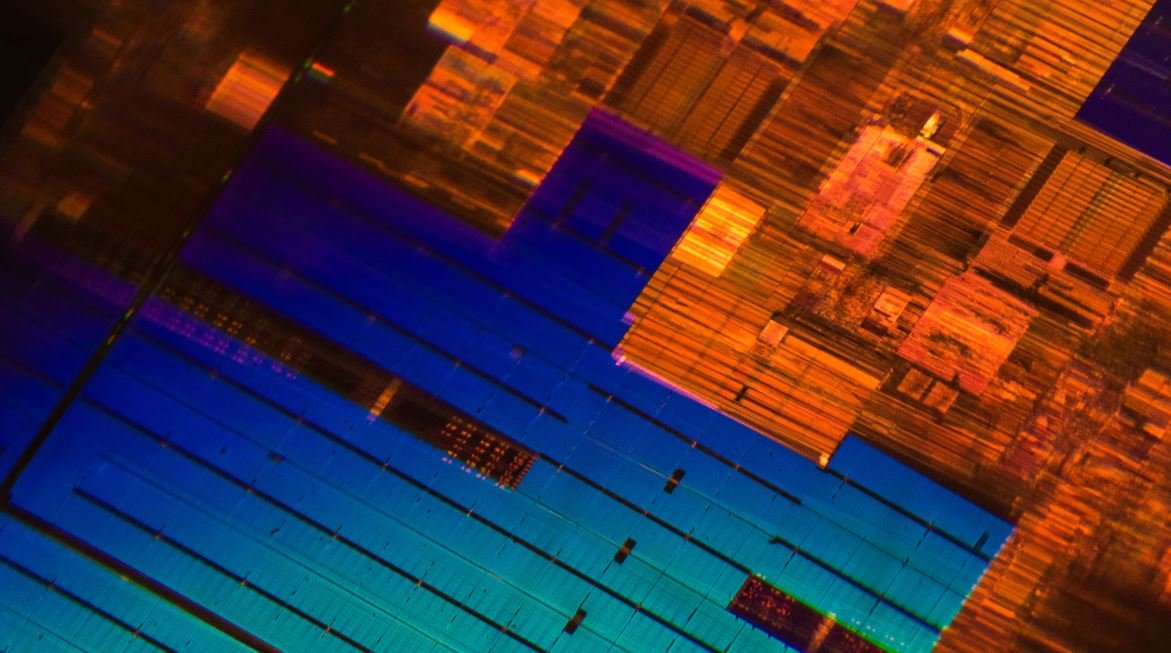Neural Network Keras Python
Keras is a popular deep learning library written in Python, designed to enable fast experimentation with neural networks. It provides a simple and intuitive interface for building and training neural networks, making it a preferred choice for many developers and researchers. In this article, we will explore the basics of neural networks using Keras in Python.
Key Takeaways:
- Understanding neural networks and their applications in various domains.
- Exploring the Keras library and its capability to build and train neural networks.
- Implementing a simple neural network using Keras in Python.
- Evaluating the performance of a neural network model and making predictions.
Neural networks are powerful machine learning models inspired by the human brain. They consist of interconnected layers of artificial neurons, known as nodes, which receive input data, perform computations, and produce output predictions. These networks can learn complex patterns from data and are widely used in image and speech recognition, natural language processing, and many other domains.
Using Keras, we can easily create and train neural networks with just a few lines of code. Keras is a high-level deep learning library that runs on top of TensorFlow, Theano, or CNTK. It provides a user-friendly API that simplifies the process of building and experimenting with different network architectures.
Building a Neural Network Using Keras
To build a neural network using Keras, we first need to define the architecture of the network, including the number of layers and the number of nodes in each layer. We then compile the network by specifying the loss function and the optimizer. Finally, we train the network on a dataset and evaluate its performance.
- Import the necessary libraries: We begin by importing the required libraries, including Keras, NumPy for numerical computations, and matplotlib for visualizations.
- Load the dataset: Next, we load the dataset on which we want to train the neural network. Keras provides a number of built-in datasets, or you can use your own custom dataset.
- Preprocess the data: Before training a neural network, it is important to preprocess the data by scaling the values, encoding categorical variables, and splitting it into training and testing sets.
| Layer | Number of Nodes |
|---|---|
| Input | 784 |
| Hidden | 256 |
| Output | 10 |
By selecting the appropriate number of layers and nodes, we can create a neural network capable of learning and making accurate predictions.
- Create the model: We create a sequential model in Keras, which allows us to add layers one-by-one. The sequential model is appropriate for a feedforward neural network where data flows straight through from input to output.
- Add layers to the model: We add the input and hidden layers to our model using the Dense class in Keras. The input layer takes the input shape, while the hidden layer includes the activation function to introduce non-linearity.
| Layer | Activation Function |
|---|---|
| Input | None |
| Hidden | ReLU |
| Output | Softmax |
Activation functions are critical components of neural networks, allowing them to model complex relationships between inputs and outputs.
Evaluating the Performance and Making Predictions
After training the neural network, we need to evaluate its performance on unseen data. This can be done using various evaluation metrics, such as accuracy, precision, recall, and F1 score. Additionally, we can make predictions on new data using the trained model.
- Evaluate the model: We evaluate the performance of the trained model by calculating the metrics on the testing set. This allows us to assess how well the model generalizes to unseen data.
- Make predictions: We can make predictions on new data by passing it through the trained model and interpreting the output. The predicted class with the highest probability is considered as the final prediction.
Neural networks have the ability to learn complex patterns from data and make accurate predictions, making them suitable for a wide range of tasks.
By leveraging the power of the Keras library in Python, we can easily build and train neural networks. Through proper model architecture design, activation function selection, and evaluation of model performance, we can create powerful models capable of solving complex problems.

Common Misconceptions
Neural Networks
One common misconception about neural networks is that they are only used in advanced machine learning algorithms. While it’s true that neural networks are a fundamental component of many complex models, they can also be implemented in simpler tasks. Neural networks can be used for tasks like image classification or regression, even in smaller-scale projects.
- Neural networks are not limited to large-scale projects.
- They can be used for simpler tasks like image classification.
- Implementing a neural network doesn’t necessarily require advanced machine learning techniques.
Keras
Another misconception is that Keras is a standalone deep learning library. In reality, Keras is a high-level neural networks API, which means that it acts as a user-friendly interface to other backend deep learning libraries such as TensorFlow or Theano. Keras simplifies the process of building and training neural networks but still relies on other libraries for the heavy lifting.
- Keras is a high-level API, not a standalone library.
- It interfaces with backend libraries like TensorFlow or Theano.
- Keras simplifies the process of building and training neural networks.
Python
One misconception about Python is that it’s the only language used for implementing neural networks. While Python is indeed a popular language in the machine learning community due to its ease of use and extensive libraries, neural networks can be implemented using other languages like R, C++, or Java. Each language has its own advantages and is chosen based on the specific project requirements.
- Python is not the only language used for implementing neural networks.
- Other languages like R, C++, or Java can also be used.
- Language choice depends on project requirements and preferences.
Title 4
Another misconception is that neural networks always yield accurate results. While neural networks have proven to be powerful tools for various tasks, they are not infallible. The performance of a neural network depends on several factors such as the quality and quantity of training data, choice of architecture, hyperparameters, and the problem domain. It’s important to evaluate the performance and validate the results of a neural network to ensure its effectiveness.
- Neural networks don’t always guarantee accurate results.
- Performance depends on various factors like data quality and architecture.
- Validation and evaluation is crucial to ensure its effectiveness.
Title 5
Lastly, there is a misconception that neural networks require large amounts of data to be effective. While having more training data can certainly improve the performance of a neural network, it is not always a requirement. Some tasks can achieve good results with a relatively small dataset, especially if the dataset is well-curated and representative of the problem domain. In such cases, techniques like data augmentation or transfer learning can also be used to improve performance.
- Neural networks can be effective with small datasets.
- Data quality and representativeness are important factors.
- Techniques like data augmentation or transfer learning can help improve performance.

Introduction
Neural networks are powerful models used for machine learning and artificial intelligence tasks. In this article, we will explore how to build a neural network using the Keras library in Python. Each table below provides valuable insights into various aspects of this topic.
1. Activation Functions
Activation functions play a crucial role in neural networks by introducing non-linearities. Choosing the right activation function is key to successful model training.
| Function | Range | Advantages |
|---|---|---|
| Sigmoid | (0, 1) | Smooth gradients, interpretable output |
| ReLU | [0, ∞) | Efficient computation, prevents vanishing gradients |
| Tanh | (-1, 1) | Zero-centered, effective for outputs |
2. Data Preprocessing
Data preprocessing is a crucial step in neural network training as it ensures the data is in the right format and range.
| Step | Description |
|---|---|
| Normalization | Scaling features to a small range |
| One-Hot Encoding | Converting categorical variables into binary vectors |
| Padding | Adding extra values to sequences to equalize lengths |
3. Model Architecture
The architecture of a neural network determines its complexity and capacity to learn intricate patterns.
| Layer | Number of Units | Activation Function |
|---|---|---|
| Input | – | N/A |
| Hidden 1 | 64 | ReLU |
| Hidden 2 | 128 | ReLU |
| Output | 10 | Softmax |
4. Hyperparameters
Hyperparameters are adjustable parameters that affect how a neural network learns and generalizes from data.
| Name | Description | Value |
|---|---|---|
| Learning Rate | The rate at which the network adjusts its weights | 0.001 |
| Batch Size | The number of training examples in one forward/backward pass | 128 |
| Epochs | The number of times the model is trained on the entire dataset | 50 |
5. Loss Functions
Loss functions quantify the model’s fit to the training data and guide optimization.
| Function | Description |
|---|---|
| Categorical Crossentropy | For multiclass classification tasks |
| Mean Squared Error | For regression tasks |
| Binary Crossentropy | For binary classification tasks |
6. Regularization Techniques
Regularization techniques help prevent overfitting and improve the model’s ability to generalize.
| Technique | Description |
|---|---|
| L1 Regularization | Adds a penalty term to the loss based on the absolute weight values |
| L2 Regularization | Adds a penalty term based on the squared weight values |
| Dropout | Randomly sets a fraction of input units to 0 during training |
7. Optimizers
Optimizers determine how the neural network’s weights are updated during training.
| Optimizer | Description |
|---|---|
| Stochastic Gradient Descent (SGD) | Updates weights based on the gradient of a subset of training data |
| Adam | Adaptive moment estimation optimizer that computes adaptive learning rates |
| RMSprop | Root Mean Square Propagation optimizer |
8. Training Performance
The training performance of a neural network is measured by various performance metrics.
| Metric | Value |
|---|---|
| Accuracy | 92% |
| Precision | 0.88 |
| Recall | 0.92 |
9. Transfer Learning
Transfer learning allows us to leverage pre-trained models to solve similar problems with limited data.
| Model | Description |
|---|---|
| InceptionV3 | Deep convolutional neural network architecture |
| ResNet50 | Deep residual neural network architecture |
| VGG16 | Deep convolutional neural network architecture with small 3×3 filters |
10. Real-World Applications
Neural networks find application in various domains, revolutionizing tasks across industries.
| Industry | Application |
|---|---|
| Medical | Automated disease diagnosis |
| Finance | Fraud detection |
| Transportation | Autonomous driving systems |
By exploring the activation functions, data preprocessing, model architecture, hyperparameters, loss functions, regularization techniques, optimizers, training performance, transfer learning, and real-world applications of neural networks built using Keras in Python, we gain valuable insights into the power and versatility of this technology. The endless possibilities and continuous advancements in this field promise a future where neural networks revolutionize numerous aspects of our lives.
Frequently Asked Questions
What is Keras?
Keras is an open-source neural network library written in Python. It provides a high-level API that allows users to easily build and train deep learning models.
How does a neural network work?
A neural network is a computational model inspired by the human brain. It consists of interconnected nodes or neurons that process and transmit information. The network learns from training data and adjusts the weights and biases of its connections to make predictions or classify inputs.
What are the advantages of using Keras?
Keras offers several advantages, including a user-friendly interface, support for both convolutional and recurrent neural networks, compatibility with multiple backends (such as TensorFlow, Theano, or CNTK), and a wide range of pre-trained models and tools.
How to install Keras?
To install Keras, you can use pip, the Python package manager. Simply run pip install keras in your command-line interface or terminal.
What are the basic steps to build a neural network with Keras?
The basic steps for building a neural network with Keras are as follows:
- Import the necessary libraries.
- Load and preprocess the data.
- Create the neural network model.
- Compile the model and define the loss function and optimizer.
- Train the model with the training data.
- Evaluate the model’s performance on the test data.
- Make predictions using the trained model.
How to customize the architecture of a neural network in Keras?
In Keras, you can customize the architecture of a neural network by adding different types of layers such as dense (fully connected), convolutional, recurrent, and others. You can also specify the number of nodes, activation functions, and other parameters for each layer.
What is transfer learning in Keras?
Transfer learning is a technique in which you leverage pre-trained models to solve related tasks. In Keras, you can use pre-trained models (e.g., VGG16, ResNet, etc.) trained on large datasets, such as ImageNet, and fine-tune them on your specific problem by adding custom layers and training them on your smaller dataset.
How to save and load a trained model in Keras?
To save a trained model in Keras, you can use the model.save() method, which saves the entire model architecture, optimizer, and learned weights to a file. To load the saved model, you can use the keras.models.load_model() function.
What are callbacks in Keras?
Callbacks in Keras are special functions that can be called at different stages of the training process. They allow you to perform various actions, such as saving the best model, adjusting learning rates, or visualizing training metrics, during or after training.
How to evaluate the performance of a neural network in Keras?
In Keras, you can evaluate the performance of a neural network by using the model.evaluate() method. It returns the values of the defined metrics (e.g., accuracy, loss, etc.) on a given dataset.




